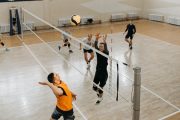Indoor Swimming Pool Lighting Design Guidance
1. Introduction
There was no swimming event in the ancient Olympic Games, but swimming has always been mastered by human beings. In the struggle against nature, in order to survive and sometimes for entertainment, human beings have gradually mastered swimming skills. Until 1896, swimming entered the first modern Olympic Games. From May 1, 1957, FINA stipulates that only world records created in the 50-meter standard pool are recognized.
The international standard swimming pool is 50 meters long, at least 25 meters wide and 2 meters deep. Set up 8 swimming lanes, each lane is 2.5 meters wide, and the distance between the outer lane lines of the first and eighth swimming lanes is 2.5 meters from the pool wall.
A qualified swimming pool should not only be satisfied with swimming, but also have to create a warm and comfortable atmosphere, and it should be visually pleasing. However, to achieve this effect, in addition to the unique design, underwater lights are also essential.
This article will share some of the more important points that should be paid special attention to when designing lighting schemes for indoor swimming pools.
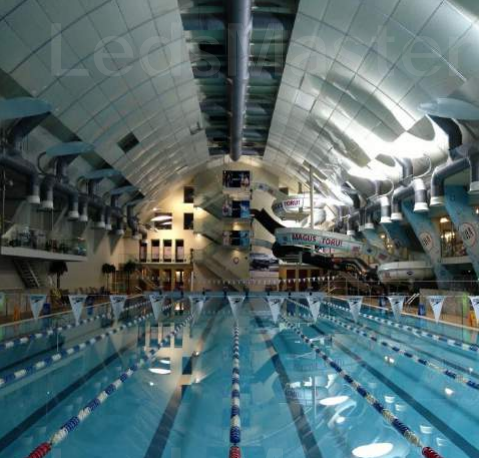
2. Lighting standard
The CIE No. 16 Technical Culture published in 1970 gave the principles and methods of daylighting design. To achieve the daylighting levels specified for a covered swimming pool, the size of the windows and top daylighting are determined by a given daylighting factor that meets the design requirements.
Of course, the economic balance point should be calculated between natural lighting and electric lighting. If the swimming pool is put into use from 9:00 to 17:00, natural lighting will be used for about 80% of the time, and electric lighting will be used for 20% of the time.
Due to the particularity of the use of swimming pools, the lights configured in this area have some special requirements, including the way of designing lighting and the selection of lamps and lanterns.
Indoor swimming pool lighting systems are often limited by buildings and structures. Electric lighting in indoor swimming pools can only be used as a supplement to natural lighting. When natural lighting is insufficient and there is no natural lighting, electric lighting can provide athletes, staff, referees and spectators. Provide the best viewing conditions. However, electric lighting cannot reduce the glare of natural light and the reflected light produced by natural light on the water surface. at the same time. Lighting equipment must be adapted to environmental conditions and easy to maintain. However, the official competition is not allowed to use natural lighting.
According to the requirements of FINA, the natural lighting factor of indoor swimming places is not less than 1/4, artificial lighting at night, the plane illumination at a height of 1 meter from the water surface is not less than 180 lux, and the open night venues should be equipped with sufficient emergency lighting.
Glare of players, referees, cameras and spectators from artificial and natural light reflected off the water should be avoided.
The reflectance of the wall and ceiling should not be lower than 0.4 and 0.6 respectively, and the reflectance of the bottom of the pool should not be lower than 0.7.
It should be ensured that there is sufficient vertical illumination around the 2m area around the swimming pool and at a height of 1m.
The minimum horizontal illuminance at any point in the swimming pool should be no less than 250 lux and the light should be able to transmit into the water.
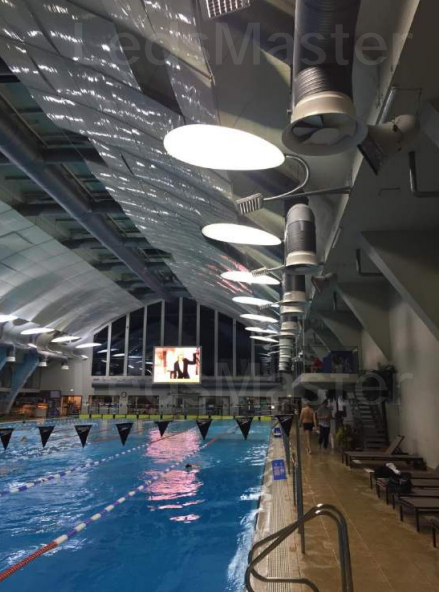
3. Lamp selection suggestions
Outdoor swimming pool lighting can use ordinary floodlights, and only requires daily maintenance; but indoor swimming pools are different, because the indoor environment is mostly high temperature, humid, and may be corroded by chemicals, so the lamps must be able to adapt to this. This is an unfavorable environment, and maintenance is also different from an outdoor pool. Therefore, when necessary, a combination of direct lighting and underwater lighting can be selected.
When installing direct lighting in the ceiling area, from the perspective of safety and service life, the lamps should be waterproof framed lamps, LED hose lamps, etc. Try to avoid choosing fragile T5 bracket lamps, so as not to fall into the swimming pool after being broken. Insulated conduits must be used for conduits leading from the power source into the luminaire. Metal or metal sheathed conduits are strictly prohibited.
The safety of underwater lamps is extremely important. Therefore, when choosing, give priority to the potting process underwater lamps. The use of potting series underwater lamps can comprehensively prevent the damage to the lamp body caused by the water entering the underwater lamps and the accompanying safety. At the same time, it comprehensively improves the safety and service life of swimming pool underwater lights. The potting process is a brand-new packaging production process for underwater lights. It seals the LED light source and electronic components of the underwater light by using transparent materials, just like objects in amber, completely protected by transparent materials.
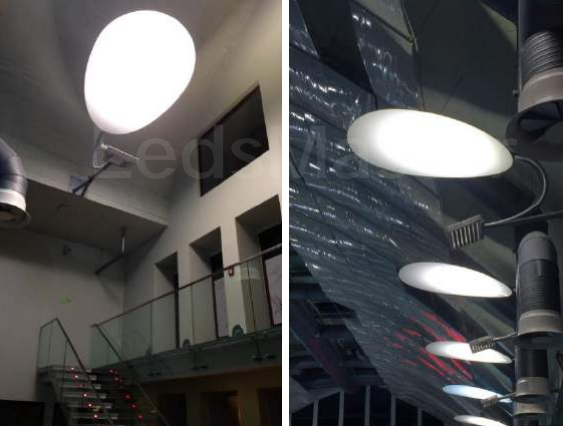
4. Lighting arrangement
Indoor swimming pools usually consider the maintenance of lamps and lanterns, and generally do not arrange lamps above the water surface, except for those with special maintenance channels above the water surface. For venues without TV broadcast requirements, lamps and lanterns are often scattered under the ceiling other than the water surface, under roof trusses or on walls. For venues with TV broadcast requirements, lamps and lanterns are generally arranged in a light belt type, that is, above the pool banks on both sides. Longitudinal horse tracks are arranged, and horizontal horse tracks are arranged above the pool banks at both ends. In addition, it is also necessary to set appropriate lamps under the diving platform and springboard to eliminate the shadows formed by the diving platform and springboard, and provide accent lighting to the diving warm-up pool.
It should be emphasized that diving sports should not arrange lamps above the diving pool. Otherwise, the mirror image of the lights will appear in the water, which will cause light interference to the athletes and affect the athletes’ judgment and performance.
In addition, due to the unique optical characteristics of the water medium, the layout of indoor swimming pool lamps and horse paths mainly considers the following issues:
Due to the unique optical properties of the water medium, the lighting control of the swimming pool venue is more difficult than other types of venues, and it is also particularly important.
Generally speaking, the projection angle of the lamps in the gymnasium is not more than 60°, so the reflected glare on the water surface can be controlled by controlling the projection angle of the lamps. The projection angle of the lamps in the swimming pool is required to be no greater than 55°, preferably no greater than 50°. The larger the incident angle of light, the more light is reflected from the water surface.
For a diver, the range of the field includes from 2 meters on the platform, 5 meters on the springboard to the water surface, that is, the entire movement trajectory space of the diver. In this space, the venue lighting is not allowed to cause any uncomfortable glare to the athletes.
Strictly control the glare of the camera, do not reflect the light from the still water surface to the main camera’s field of view, and the light emitted by the lamps must not be directed to the fixed camera. It is more ideal if the 50° sector centered on the fixed camera is not directly illuminated.
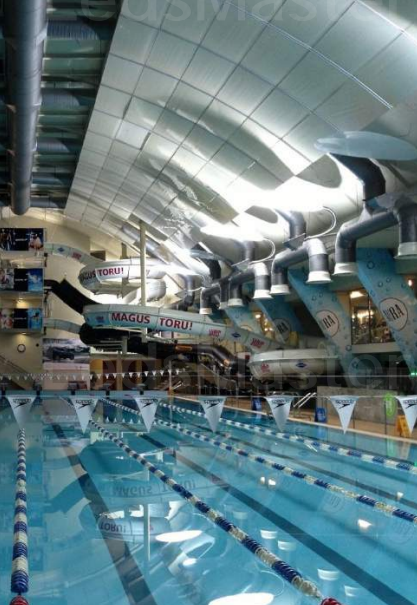
5. Conclusion
Swimming pool lighting design is extremely important. The lighting system should ensure that there is no visual interference to improve safety. For swimmers, swimming pool lighting must first provide safety for swimmers; for staff and service personnel, they must be able to see clearly. In the event of a dangerous swimmer, life-saving measures can be taken as soon as possible. Therefore, to provide swimming pool lighting, the selection of high-quality underwater lights is the top priority. LED masters professionally design and produce underwater lights, comprehensive safety upgrades, high energy saving and environmental protection efficiency, excellent cost performance, and durability; meet the safety voltage of 12V, and have better anti-corrosion performance. Excellent, easy to maintain.
After 18 years of precipitation, the LED Master brand is the founder, leader and innovator of underwater lights. It is the first group of companies in the world to start independent research and production of professional underwater lights. It has created a variety of underwater light styles that are popular in the market, and has played a positive role in the development and promotion of the swimming pool lighting industry.
Over the years, the company has been customer-oriented and technological innovation as its own responsibility. Every year, the company invests huge technical strength and resources in the research and development and innovation of underwater light technology, and has obtained a number of patented underwater light technologies with independent intellectual property rights. At present, the company has more than 30 types of underwater lights, hundreds of specifications and models of underwater lights, modern underwater light production lines and perfect underwater light quality testing technology and equipment. It is one of the most complete and professional underwater light manufacturers in the world.



